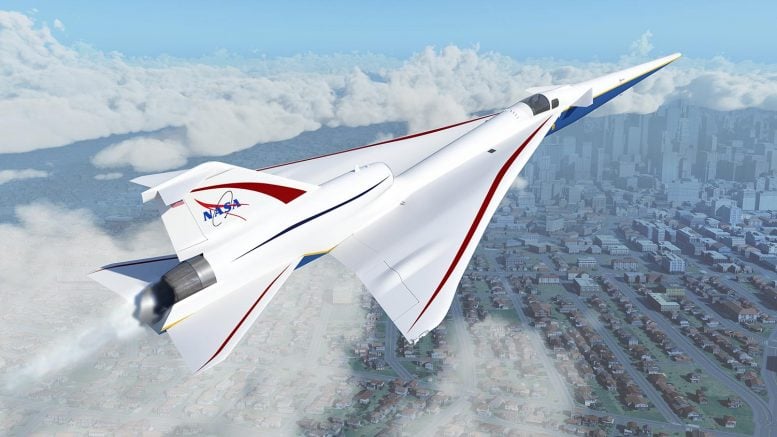
NASA’s X-59 Quiet SuperSonic Technology aircraft, or QueSST, is designed to fly faster than the speed of sound without producing a loud, disruptive sonic boom, which is typically heard on the ground below aircraft flying at such speeds. Instead, with the X-59, people on the ground will hear nothing more than a quiet sonic thump – if they hear anything at all. The X-59 will fly over communities around the United States to demonstrate this technology, but first, NASA will need to validate the X-plane’s acoustic signature, using a ground recording system. Credit: NASA / Joey Ponthieux
NASA’s X-59 has undergone final installation of its lower empennage, better known as the tail assembly. This series of images was taken at Lockheed Martin Skunk Works in Palmdale, California.
This installation allows the team to continue final wiring and system checkouts on the aircraft as it prepares for integrated ground testing, which will include engine runs and taxi tests.
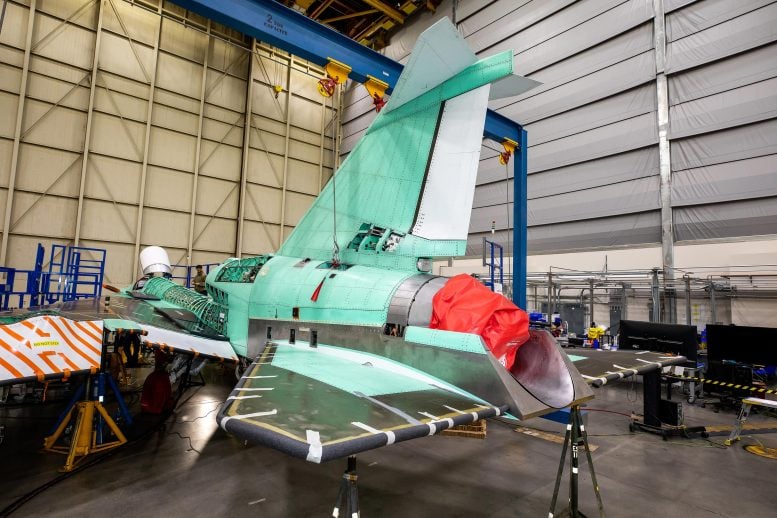
NASA’s X-59 sits in support framing while undergoing the installation of its lower empennage, or tail section, at Lockheed Martin Skunk Works in Palmdale, California, in this image from late March 2023. Credit: Lockheed Martin
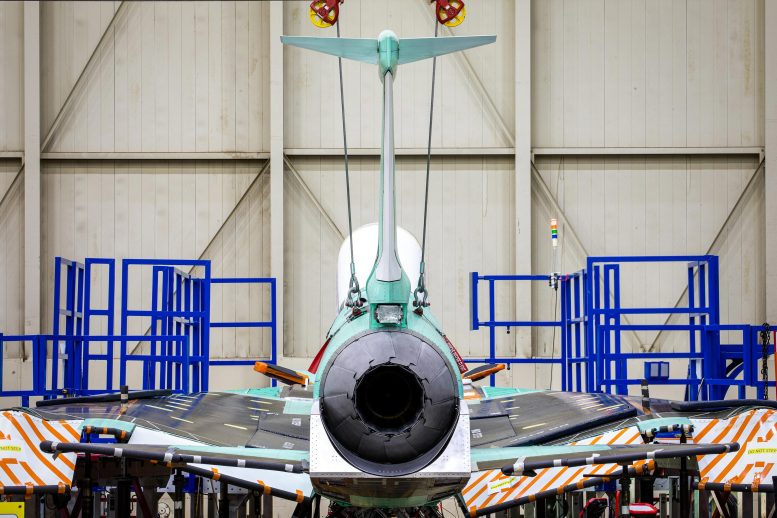
A perfectly framed up rearview shot of NASA’s X-59 tail after its recent installation of the lower empennage, or tail section, in late March at Lockheed Martin Skunk Works in Palmdale, California. Credit: Lockheed Martin
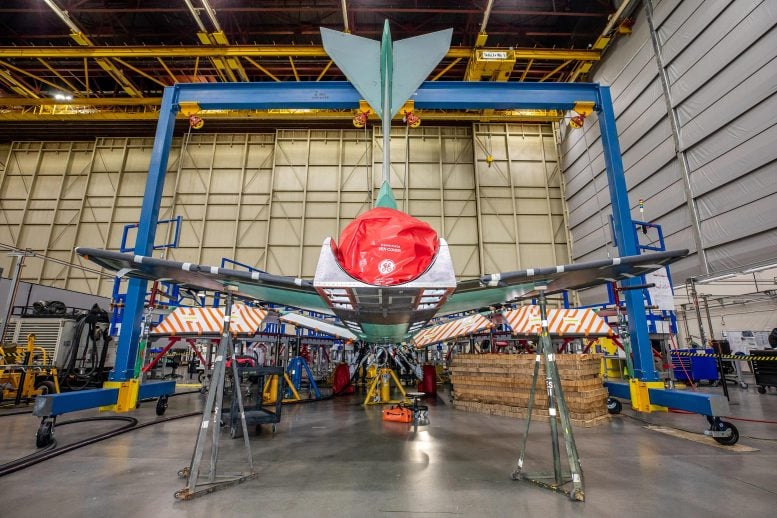
NASA’s X-59 sits in support framing while undergoing the installation of its lower empennage, or tail section, at Lockheed Martin Skunk Works in Palmdale, California in late March. Credit: Lockheed Martin
Once complete, the X-59 aircraft—the centerpiece of NASA’s Quesst mission—is designed to demonstrate the ability to fly supersonic while reducing the loud sonic boom to a quiet sonic thump. The Quesst mission will then fly the X-59 over several U.S. communities to gather data on human responses to the sound generated during supersonic flight and deliver that data set to U.S. and international regulators.
In this time-lapse, you’ll see NASA’s X-59 undergo final installation of its lower empennage, better known as the tail assembly. This time-lapse was taken at Lockheed Martin Skunk Works in Palmdale, California. The installation allows the team to continue final wiring and system checkouts on the aircraft as it prepares for integrated ground testing, which will include engine runs and taxi tests. The X-59 aircraft is designed to demonstrate the ability to fly supersonic while reducing the loud sonic boom to a quiet sonic thump and is the centerpiece of NASA’s Quesst mission. Credit: NASA
The Quesst mission has two goals: 1) design and build NASA’s X-59 research aircraft with technology that reduces the loudness of a sonic boom to a gentle thump to people on the ground; and 2) fly the X-59 over several U.S. communities to gather data on human responses to the sound generated during supersonic flight and deliver that data set to U.S. and international regulators.
The X-59 research aircraft is the centerpiece of NASA’s Quesst mission. It is designed to fly supersonic without creating a loud sonic boom to people on the ground. In this edition of Inside the Quesst see the latest assembly update, life support system research, and recent STEM news. Credit: NASA
X-59, NASA’s first purpose-built, supersonic X-plane in decades will soon take to the skies. A single pilot is to fly the 99.7-foot-long, 29.5-foot-wide aircraft powered by a single jet engine. Its design research speed will be Mach 1.4, or 925 mph, flying at 55,000 feet. NASA will use the experimental X-59 to provide data that could change the rules that ban supersonic flight over land by proving a sonic boom can be reduced to a barely-audible sonic thump heard on the ground.

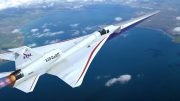
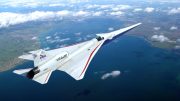
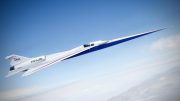
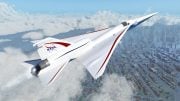
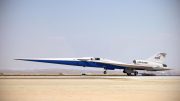


Be the first to comment on "NASA’s Quesst Mission: X-59 Quiet Supersonic Technology Aircraft Gets Its Tail"